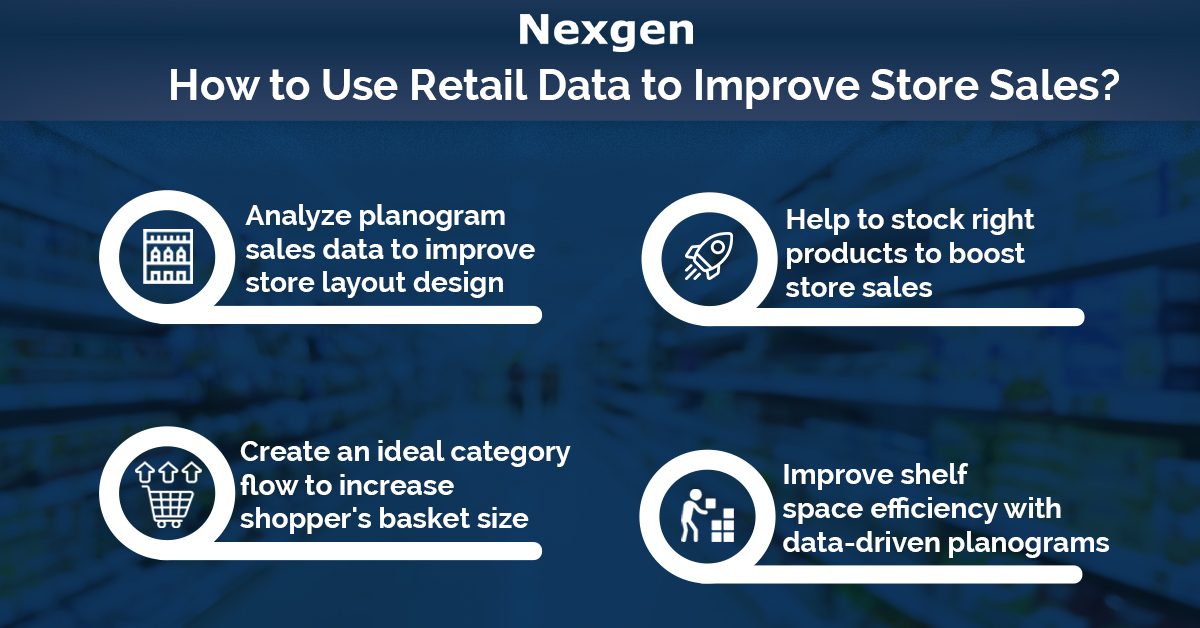Stocking the right products and merchandising them rightly on a shelf helps boost retail sales. Imagine, for example, that your customers are enjoying a new variety of plant-based patties. The demand for such items will increase over a period of time. Therefore, retailers need to stock such items and take full advantage of the sales potential of these items by considering the space allocation with data-driven planograms. That is why planogram software helps retailers to use the full potential of their store’s data to improve shelf space efficiency. Planograms are the visual merchandising tool, that helps retailers properly plan and execute store shelves by analyzing the retail data efficiently. So, the following are some ways to improve store sales with planogram retail data:

- Use retail data to improve store layout design: There is no doubt that every retailer wants more customers to visit their stores. After all, more customers can make more sales, and it increases retail profitability. That is why, if you are planning to improve the store layout design, make sure to analyze the past sales data of your retail planograms first. The data-driven planograms can make a store layout more profitable, which allows retailers to ensure fast moving product categories in the store. It helps to understand which products are top-performing, fast- and slow-moving Incorrect store layouts could result in huge loss in the store.
- Use retail data to increase shopper’s basket size: In retail stores, you cannot just place items anywhere, expecting your customer to purchase them. For example, retailers can consider how to present products on store shelves, which is more exposed to shoppers. It can be done by creating an ideal category flow for your retail stores. When you get this done rightly by analyzing planogram reports, it encourages shoppers to purchase more. For example, placing complementary categories like both women’s and men’s safety razors together can increase the chance of retail sales.
- Use retail data to improve retail shelf space: Since shelf space is limited for every retailer, it is one such place, they need to think and execute properly for their own advantage. Therefore, before planning a shelf space, consider the store layout design, consumer behavior, and past sales data to consider where to place items efficiently. This leads to a positive shopping experience for the shoppers and improves sales. Data-driven planograms allow us to provide the correct space for each product category. For example, by looking at the past retail sales data, you will get to know about the fast-and-slow-moving items.
Overview of Nexgen POG
Nexgen POG is a robust and user-friendly cloud-based visual merchandising tool. It is designed for quick and efficient planogramming with minimal effort. Planograms can be designed by easily dragging and dropping the products. The multi-device compatibility feature of POG allows you to obtain, share and edit planograms on any device, including your phone. It helps in designing store-specific planograms for increased product visibility and sales.
Get Your Free Trial Now!